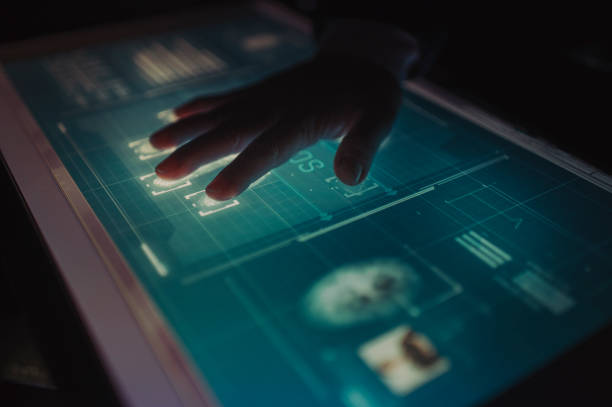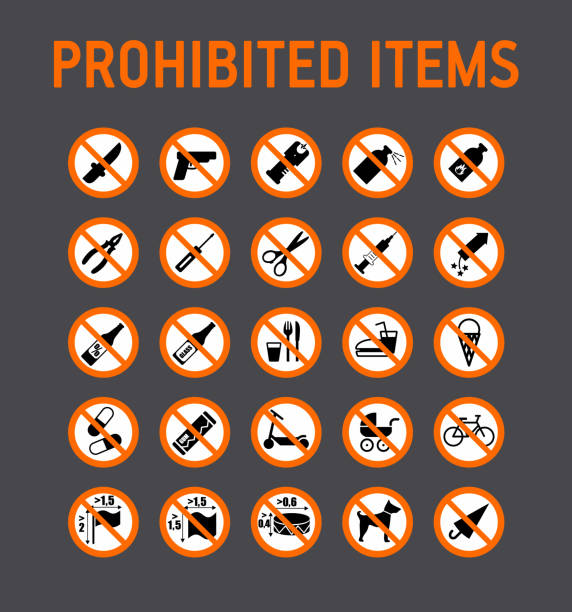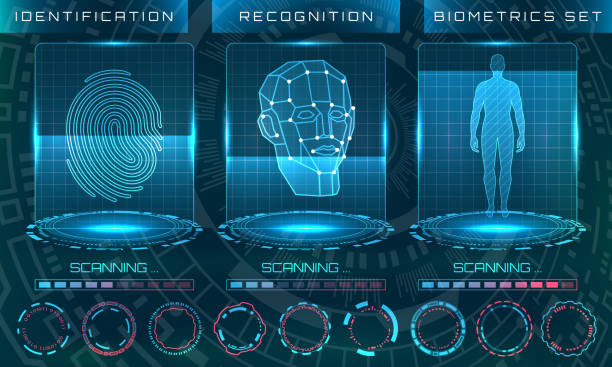There is more to biometrics than just fingerprinting! Learn about the procedures followed during this U.S.C.I.S. visit and how they may affect your immigration application!

If you are applying for a green card, naturalization, or some other U.S. immigration benefit, U.S. Citizenship and Immigration Services (U.S.C.I.S.) will require you to submit a fee for biometrics. A few weeks before you attend the interview for your application, you’ll be called in for a biometrics appointment.
Even if you already have a green card but are applying for a renewal after it expires, you must get biometrics done. Keep reading as we put you through everything you should expect at your U.S.C.I.S. biometrics appointment!
What is the Biometrics Appointment and What Happens There?
At the biometrics appointment, you will have your fingerprints, photo, and signature taken for your visa or immigration application. Its essence is to run a background check and for identification purposes.
Usually, U.S.C.I.S. will schedule a date and time for the biometrics appointment, but sometimes, you may have to plan it yourself.
Several people might have received the same appointment time as you did. Generally, everyone given the same appointment time will be called in on a first-come, first-served basis.
Once you arrive at the A.S.C., you might be given a number showing your place in line or asked to fill out and hand in a short form letting the A.S.C. employees know you’re there. They will call your wait-list number or name when it’s your turn.
If you have a conflict, you can attend your scheduled biometrics appointment early or reschedule it for a later, more convenient time. However, it’s best that you attend at the scheduled time whenever possible.
What Location is the Biometrics Appointment?
In most cases, U.S.C.I.S. will require individuals to attend their biometrics appointment at a USCIS-authorized Application Support Center. This is quite different from the main U.S.C.I.S. office where you go for your interview for naturalization, adjustment of status, or whatever it is you’re applying for.
If you have questions about your immigration case (for instance, when you will likely be called in for an interview), this is not the place to ask them. The people who collect biometrics cannot access your case file and cannot give you personalized advice or information.
Biometrics Notice Codes

Your Application Support Center Biometrics Appointment Notice includes a code in the top right part of the letter. The code shows the type of biometrics processing that you will undertake. The possible values include:
- Code 1: The appointment is limited to collecting fingerprints for all ten digits. U.S.C.I.S. will dispatch the fingerprints to the F.B.I. for a background check.
- Code 2: Personnel will collect a photo, signature, and index finger-press print. This type of processing is specific for beneficiaries who receive a card like a permanent resident card or employment authorization document (E.A.D.).
- Code 3: Personnel will collect a photo, signature, index finger-press print, and fingerprints for all ten digits. In short, code 3 is a mixture of codes 1 and 2.
What to Bring to a Biometrics Appointment
- A photo I.D., which could be your passport or driver’s license
- The notice/message you received from U.S.C.I.S. informing you of the time and place of your biometrics appointment
- Any other receipt notices that you received from U.S.C.I.S.
- Other documents U.S.C.I.S. has requested explicitly on your appointment notice (could be previous employment authorization documents or travel permits issued to you)
If you have only an expired passport, ensure you obtain a new one early enough. However, if you are still waiting for a new passport when your appointment is scheduled, bring a letter or receipt notice from your home country’s embassy declaring that your passport renewal is still in progress. You will also receive the latest health screening instructions if needed.
What NOT To Bring to Your U.S.C.I.S. Biometrics Appointment

There are some restricted items that you should never bring with you to the fingerprinting area at your biometrics appointment:
- Any form of weapon
- Food
- Cameras
- Any other electronic devices
It’s also optional for your attorney to attend your biometrics appointment.
How Long is the Biometrics Appointment?
Generally, the process takes 10–20 minutes, although you may have to wait beforehand. There is no interview at the biometrics appointment, and the people who take your fingerprints and photo do not have any information about your application.
Therefore, refrain from asking any questions here. Even the people who do the fingerprinting are usually not U.S.C.I.S. employees but work for separate contractors and don’t necessarily know anything about the immigration process.
Rescheduling a Biometrics Appointment
If you cannot make your biometrics appointment on or before the scheduled day, you must ask to be rescheduled. Failure to do so can result in the U.S.C.I.S. deciding your entire application has been abandoned and canceling or denying it.
You may have to make your request in writing formerly; U.S.C.I.S. now accepts rescheduled requests by phone, at its Contact Center line, or using its online scheduling tool at MyUSCIS.gov. Remember that you cannot use the online tool if your appointment has already been rescheduled twice or more times, if it is coming up within the next 12 hours, or if you missed it completely.
You will also be expected to establish a good cause for rescheduling. According to U.S.C.I.S., a Good cause includes:
- Illness, medical appointment, or hospitalization
- Previously arranged travel plans
- Significant life events, including a wedding, funeral, or graduation ceremony
- Incapacity to transport yourself or your family to the biometrics appointment location
- Not being able to obtain leave from your employment or caregiver responsibilities
- Having received a late delivery of the biometrics appointment notice or never received it.
If you are sick, U.S.C.I.S. will accept you to reschedule your biometrics appointment. It’s never good to show up later than your scheduled time, but if an emergency causes an hour late, try showing up and explaining, and ask to be processed that day.
What Happens After Your Biometrics Appointment?
At the end of the biometrics appointment, you will be given a stamp on your appointment notice confirming that you attended. Keep this document safe if you are later asked for it or U.S.C.I.S. cannot find its record stating that you came to the appointment.
It is best always to store all documentation received from U.S.C.I.S. in a safe place. Your fingerprints will be sent on for review by the U.S. Federal Bureau of Investigation (F.B.I.), which will check them against records held by the police as well as by U.S.C.I.S. (which often takes the fingerprints of illegal crossing caught at the border).
Afterward, the F.B.I. will send a report to U.S.C.I.S. to confirm your identity and to show whether you have committed any crimes or immigration violations that might make you inadmissible, deportable, or ineligible for the benefit that you seek.
Frequently Asked Questions
What If I Have a Criminal Record?

If you think you might have a criminal record but are unsure, consult an immigration lawyer. The lawyer can help you get fingerprints done and analyze the results. Some, though not all, crimes make an individual who committed them ineligible for immigration benefits.
If you take care of this, you will discover what the F.B.I. report says about you once you get to your primary U.S.C.I.S. interview. As such, your application could be seriously sidetracked or delayed.
Why Did I Get a Second Biometrics Appointment Notice?
Although you might find yourself getting called to a second biometrics appointment, this does not indicate any wrongdoing on your part, nor does it suggest that your application will be denied. Here are two common reasons that you may be asked to attend a second biometrics appointment:
- The fingerprints were stained or not usable. If this happens, or any other error makes using the fingerprints, photo, or signature you provided impossible, you’ll have to go in for a second biometrics appointment.
- Your biometrics expired before your application was processed. The biometrics and associated background checks are valid for only 15 months. If it has taken longer than that for the U.S.C.I.S. to process your green card application, you must retake your biometrics.
Remember to consider the importance of the biometrics appointment: U.S.C.I.S. will only accept your green card application if you complete it with rescheduling ahead of time. But if you plan, the biometrics appointment should be a quick and painless step toward getting your green card.
What if the Fingerprint Reader Can’t Read My Fingerprint?
Sometimes, the fingerprint readers that the A.S.C. uses struggle to read applicants’ fingerprints, maybe because your hands are too dry. If this happens, the officer will usually offer you some hand lotion so the fingerprint reader can capture your fingerprint.
You don’t have to worry if your palms are sweaty; the fingerprinting technology can still capture your fingerprints. If the fingerprint reader still can’t capture your fingerprints after the officer tries a few different solutions, they must try other fingerprinting options.
Is the Biometric Appointment Free?
No, a U.S.C.I.S. biometric appointment is not free. U.S.C.I.S. charges $85 for the biometric screening. Generally, the applicant or petitioner pays this fee when filing the U.S.C.I.S. form.
Sometimes, U.S.C.I.S. may request that an individual attend a biometric screening when you did not pay a fee. They will request payment at the time of the appointment.
